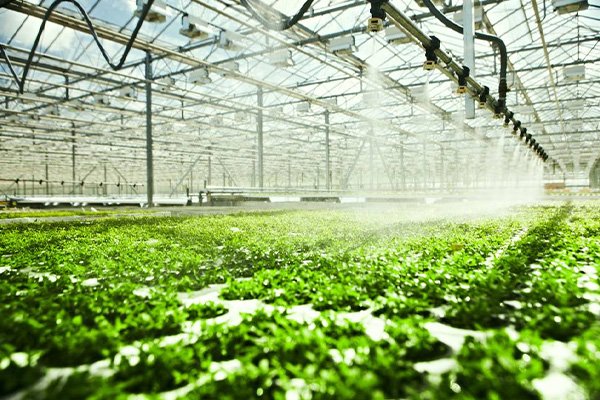The concept of a greenhouse involves creating a controlled environment for growing plants, which can be particularly beneficial in regions where the natural climate is not ideal for certain crops. One of the critical aspects of managing a greenhouse environment is humidification. Here’s an in-depth look at how humidification is utilized in greenhouses:
Importance of Humidification in Greenhouses
- Plant Health: Many plants thrive in environments with specific humidity levels. Proper humidification can help prevent issues such as wilting, leaf burn, and stunted growth. It also supports optimal transpiration rates, which are crucial for nutrient uptake.
- Pest and Disease Control: Maintaining appropriate humidity levels can reduce the prevalence of pests and diseases. For example, overly dry conditions can make plants more susceptible to spider mites, while overly humid conditions can promote fungal growth.
- Temperature Regulation: Humidity plays a role in regulating the temperature within a greenhouse. Water vapor can absorb and retain heat, helping to maintain a stable temperature that is conducive to plant growth.
Methods of Humidification
- Misting Systems: Misting systems use fine sprays of water to increase humidity levels. These systems can be automated to maintain consistent humidity, and they can also help cool the air by evaporation.
- Fogging Systems: Fogging systems produce a finer mist than traditional misting systems, creating a fog that can quickly increase humidity. These systems are efficient and can cover large areas uniformly.
- Evaporative Coolers: These devices pull warm air through wet pads, causing the water to evaporate and cool the air. The cooler, humidified air is then circulated throughout the greenhouse.
- Humidifiers: Commercial humidifiers designed for greenhouses can be used to add moisture to the air. These devices come in various sizes and capacities, suitable for different greenhouse dimensions and plant requirements.
Managing Humidity Levels
- Monitoring Systems: Installing hygrometers and automated monitoring systems helps maintain optimal humidity levels. These systems can provide real-time data and adjust humidification equipment as needed.
- Ventilation: Proper ventilation is essential to prevent excessive humidity, which can lead to mold and mildew. Automated vents and fans can help balance humidity levels by allowing fresh air to circulate.
- Water Management: Overwatering can contribute to high humidity levels. Implementing efficient irrigation systems like drip irrigation can minimize excess moisture and help control humidity.
- Plant Spacing: Adequate spacing between plants allows for better air circulation, which helps maintain balanced humidity levels and reduces the risk of disease spread.
Challenges and Considerations
- Energy Consumption: Humidification systems, especially those that use water pumps and fans, can consume significant amounts of energy. Efficient system design and the use of renewable energy sources can help mitigate this issue.
- Water Quality: The quality of water used in humidification systems can affect both the plants and the equipment. Using filtered or treated water can prevent mineral buildup and ensure the health of the plants.
- Cost: The initial investment in humidification systems can be substantial. However, the long-term benefits of improved plant health and increased yields can justify the expense.
Conclusion
Humidification is a vital component of greenhouse management, directly impacting plant health, pest and disease control, and overall productivity. By employing effective humidification methods and monitoring systems, growers can create optimal growing conditions, leading to healthier plants and higher yields. Careful consideration of the challenges and efficient management practices can help maximize the benefits of humidification in greenhouse environments.

